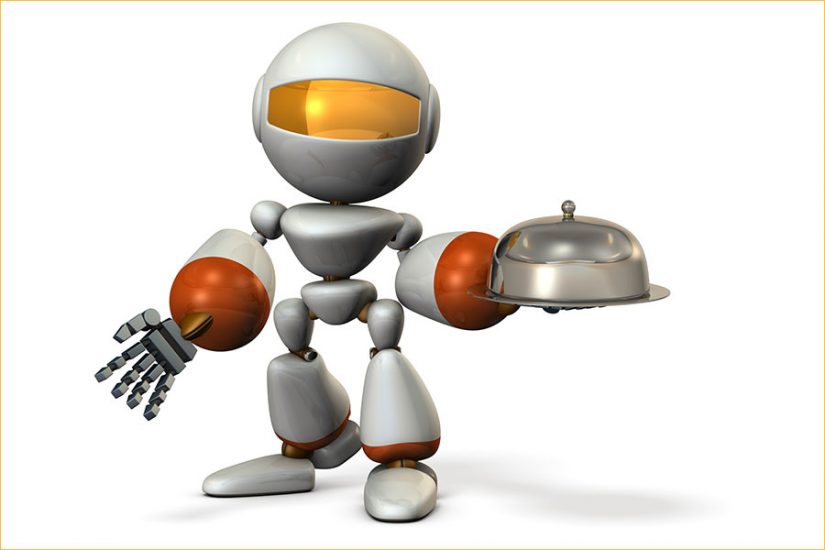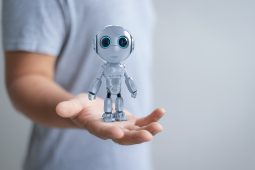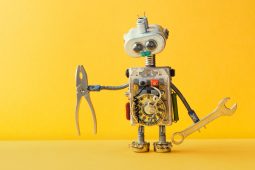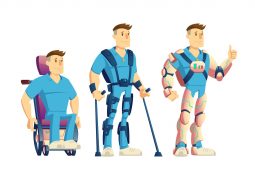An Attention-grabbing Ramen Shop on a Shibuya Station Platform
The food company ACECOOK has opened a pop-up ramen shop called Mocchicchi Station on a JR Yamanote Line platform at Shibuya Station which has been featured in many news stories.
On Japan’s railways, simple stand-up soba noodle shops are often set up near platforms and station premises, so opening up a ramen shop is not unusual. ACECOOK’s shop is notable for offering only cup-type instant ramen noodles. What is more, robots are in charge of everything from selling the ramen, clearing up after meals, and cleaning the store.
Automatic Cashless Payments
According to the press release ACECOOK opened Mocchicchi Station in order to market new cup ramen products and also to introduce a variety of technology from Ishida, iRobot Japan, and Microsoft Japan. Let’s see what kind of technology is used by following each step of the process from buying cup ramen until the noodles are eaten.
Mocchicchi Station has no reception staff and customers have to take the cup ramen from the shelves themselves.
The shelf where the cup ramen is placed is equipped with a sensor that weighs the contents so that the number of purchases can be automatically calculated from the change in weight. Then, the number of purchases is transmitted to an adjacent payment terminal, which requests payment from the customer.
The customer confirms the amount displayed on the payment terminal and makes a cashless payment using a credit card or electronic money such as Suica.The system linking the shelf with the payment terminal was put together with technology from Ishida.
Audio guidance provides instructions for the purchase procedure, so even in the absence of staff, a customer will not be confused about how to use the shop. This audio guidance is focussed on its target audience through a super-directional speaker, so it does not bother other customers as they eat.
A Camera & 3D Sensor Detects Your Seat
In order to eat this cup ramen, you need to add boiling water and wait 5 minutes. Sadly the provision of hot water is not automated, but the 5 minutes is timed automatically by Ishida’s system.
A camera and 3D sensor are installed on the ceiling of the store, and these capture the movement of the customer as they add the hot water and move to their seat. Once the customer has finished adding water, a 5-minute timer is activated. Then, recognizing which seat the customer is sitting in, the remaining time is shown on a screen in front of that seat.
In this way, a customer is prevented from mistaking the time and ending up with noodles that are too hard or too soft.
Furthermore, a Qi-compatible charging system is incorporated at the seat, so that a smartphone can be charged simply by putting it down.
Robots for Clearing Up and Cleaning the Shop
Clearing up after your meal can be left to a robot. iRobot’s Braava jet m6 robot wipes up any mess with a mop, and cleans the table top.
After finishing the meal and throwing away the ramen cup, the customer simply taps the “Start Cleaning” button on a touch panel provided at the seat. At that, the Braava jet m6, which has been standing by at the back of the table, begins to move, spraying water on the table and wiping it clean. The Braava jet m6 detects obstacles with a sensor and avoids them, so the customer can keep their belongings on the table without getting them wet.
On top of that, cleaning the shop is also the work of a robot. At a fixed time iRobot’s Roomba i7 + will automatically carry out the cleaning. Though the shop is unmanned, the cleaning is completed before the doors are opened.
A Shop Management System Developed in 1 Month with Cloud Coordination
ACECOOK appears to have completed this unmanned ramen shop system in about one month by coordinating each of Ishida’s systems using Smart Store shop management technology based on Microsoft’s Azure cloud service.
The shelves that hold the cup ramen and the hot water pot are also managed by Ishida’s system, and when the remaining quantity runs low, maintenance staff are notified and prompted to restock. Moreover, this can provide a marketing analysis function by analysing stock sales.








